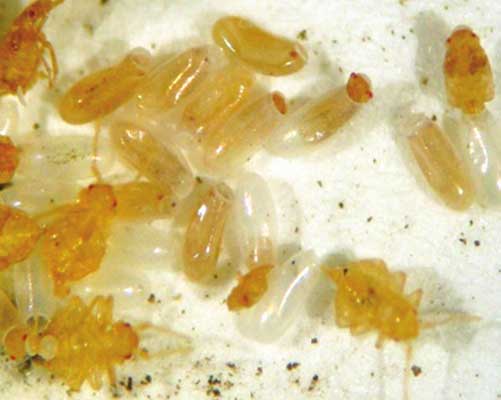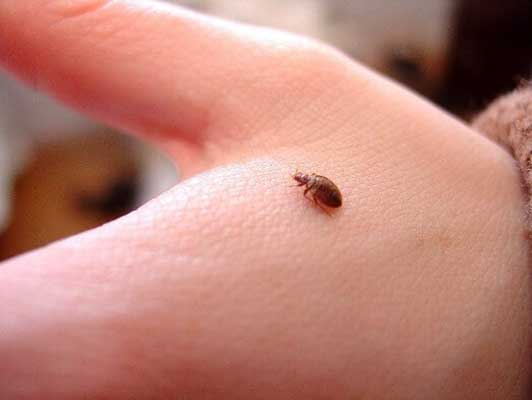One of the most disappointing things about bed bugs is that it’s hard to spot them inside your house. Of course, if you wake up in the dead of night and look hard, you may get lucky. The most bugging question, however, is how will you know that the creature you find in your home or apartment is indeed a bed bug?
Knowing the distinct features to look for is the first step to finding and controlling bed bugs. Depending on where you come from, you’ll find other creatures that look like bedbugs, whether it’s carpet beetles, swallow bugs, fleas, cockroaches, or even bat bugs. Let’s look at some ways to help you differentiate between bed bugs and other creatures.
Bed Bugs Physical Appearance
There are distinct factors when you’re looking to identify bed bugs. To determine whether you are dealing with bed bugs or another insect, these are the factors you should look for.
Size
Bed bugs have different sizes at different life stages. Also, the male and female bed bugs differ in size—the adult bed bug measures between 5 to 7 mm. In short, these insects can reach the size of an apple seed. A few minutes after feeding, these bugs may look more prominent and a little bit elongated. They may become bigger by up to 50% right after a blood meal.
Color
Bed bugs also come in different colors and different sizes depending on their age and whether they have fed or not. Depending on your location, they exude mahogany to rusty brown color. However, once they feed on blood, their color changes to reddish-brown.
Shape
Another distinctive attribute that you can use to differentiate bedbugs from other parasites is their shape. Typically, these creatures feature a flat, broad, oval-shaped body.
Other Features
These creatures have six legs and two antennae. Since these features can only be seen using a magnifying glass, they may not be helpful to homeowners who want to identify bed bugs on the spot. These creatures also leave a foul, somewhat musty odor.
The Life Cycle of Bed Bugs
Bed bugs go through several stages to become adults. The whole process takes between two to six weeks, depending on the environmental conditions and food availability. Experts also warn that in adulthood, the bugs can survive for six months without feeding. However, the female bugs have to get their blood meal for them to reproduce.
For reproduction, bed bugs require an optimal temperature of 70°F, some warmth, and security. The female can lay between 5 to 10 eggs daily or around 200 to 500 eggs in a lifetime. This cycle explains why these creatures multiply so fast when they find the right conditions and a blood meal. Once the eggs are laid, they hatch into the nymph, which takes five stages known as instars to develop into a full adult. A nymph has to find a host, get a blood meal, and shed its exoskeleton. However, this doesn’t necessarily mean that the nymph has to feed right away after hatching. It can stay for weeks or months before consuming blood for the first time.
The nymph seems to be translucent in its first stage, but it starts to get a distinctive hue as soon as it starts to feed. Nevertheless, it is difficult to see the nymph with naked eyes due to its small size and color.
Here are the stages of Bed Bug Growth and Development:
- Egg
Typically, bed bug eggs are white and are oval-shaped. They are around 1mm in size and may be invisible to naked eyes unless they are in a cluster. The egg hatches into a nymph.
- Nymphs
Once out of the egg, the nymphs can now move and eat. The nymph sizes range from 1.5 mm to 5 mm, depending on the development stage. They appear to be translucent or whitish-yellow. The nymph undergoes five phases known as instars before it matures into adulthood. Nymphs have to eat blood for them to molt into the next instar. If it fails to feed, it won’t shed its exoskeleton or progress to the next stage. The four stages of the nymph are:

- First Instar – 1.5 mm
- Second instar – 2-3 mm
- Third instar – 3 mm
- Fourth instar – 4 mm
- Fifth instar – 5 mm
After having five blood meals and shedding its exoskeleton five times, the nymph transforms into an adult bed bug.
- Adult Bed Bugs
A fully grown bed bug has a flat and oval-shaped body that’s usually rusty-brown. But once it finds a human host and consumes a full-blood meal, it turns reddish-brown. At this stage, the bed bug measures anywhere between 5 -7 mm, depending on a few factors.
How Long Until Bed Bugs Start Biting?
As we mentioned before, these creatures start to feed when they get out of the egg. So, in a bug’s entire lifecycle, it is only an egg that won’t bite! Now that you know these bugs will bite you whenever they feel like it, you understand why they need to be detected and exterminated from your home before they multiply.
What to Do if You Can’t Find Bed Bugs
We just said that these creatures are the size of an apple seed; noticing them is one of the hardest things, and by the time most homeowners know they have bed bugs, they have been there for months.
The first thing that makes finding bed bugs an uphill task is because they are nocturnal. You can only see them if you stay up at night, but if you try to switch on the lights, bed bugs descend into their hiding places.
If you have seen a few signs that indicate that there are bed bugs in your house, but you can’t seem to find them, you don’t have to worry. Just contact a professional bed bug exterminator to help you with the problem. These experts not only know how to locate these pesky creatures but will also help you get rid of them.


